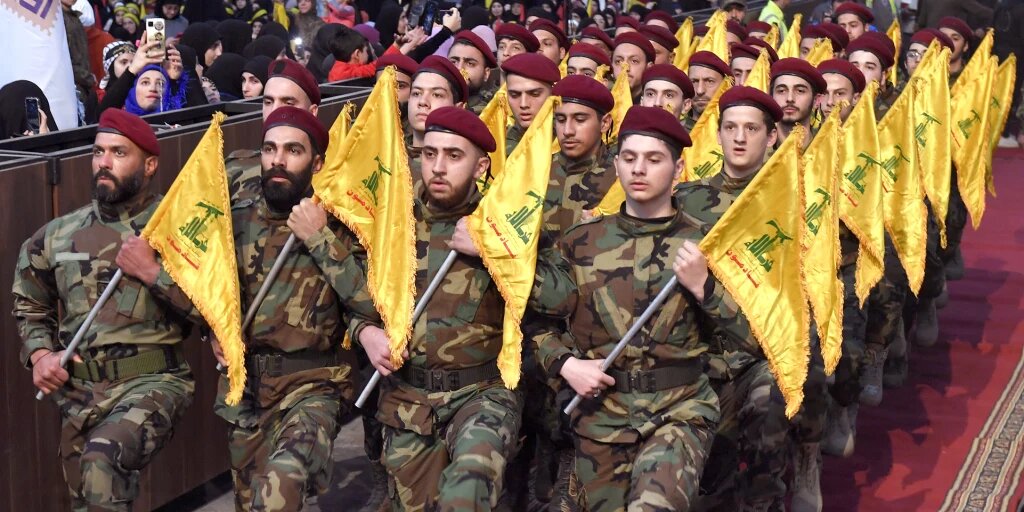Hezbollah's hybrid war capability sparks fears in Israel

TEHRAN - Lebanon’s Hezbollah has kept Israel on its toes since launching a barrage of missiles and drones that targeted multiple sites including a major military intelligence base near Tel Aviv at the weekend.
Reports suggest that the Hezbollah attack dubbed Arbaeen Operation caused significant damage in Israel. The Benjamin Netanyahu regime has been accused of trying to sweep the losses and casualties under the rug.
Hezbollah fired more than 300 Katyusha rockets and a large number of drones at Israel on Sunday morning. That was an initial response to the Israeli assassination of its senior military commander Fuad Shukr in Beirut on July 30.
Hezbollah Secretary General Sayyed Hassan Nasrallah said in a speech on Sunday evening that the main focus of the attack was the Glilot base north of Tel Aviv around 100 kilometers from Lebanon’s border.
The facility is home to the Mossad intelligence service and the military intelligence group Unit 8200.
Nasrallah stressed that the attack struck deep into Israel in contrast to the resistance movement’s previous attacks, which largely hit northern Israel and the occupied Golan Heights.
The Arbaeen Operation dealt a devastating and crushing blow to Israel’s security and intelligence systems.
This is because Israel had been on high alert since killing Shukr and awaiting a retaliatory attack from Hezbollah. But despite taking advantage of Western satellite technology, the Netanyahu regime failed to deter the Hezbollah strike.
For now, facts on the ground indicate that the Arbaeen Operation substantially eroded Israel’s deterrent power and widened gaps within the Israeli establishment which is still reeling from the shock of a surprise military operation (Al-Aqsa Storm) carried out by Hamas on October 7.
The Al-Aqsa Storm highlighted Israel’s military and intelligence failures and the Arbaeen Operation reminded the regime that it will have to brace for more tremendous shocks.
But this is just the tip of the iceberg.
Hezbollah also hit an Israeli vessel during its Sunday operation.
Israeli media have confirmed that an Israeli soldier was killed and two others were wounded on a Dvora-class patrol boat off the northern coast of occupied Palestine near Nahariya.
However, Israel claims they were hit by shrapnel from an Iron Dome interceptor missile as the regime tries to downplay the Hezbollah attack.
Israel and Hezbollah have been trading fire since the day after the start of the Gaza war on October 7.
Over the past months, Israel has threatened to launch an all-out war against Hezbollah if it does not stop strikes against the regime.
But Hezbollah has stressed that it will not stop its attacks as long as the Netanyahu regime continues the Gaza war which has so far claimed the lives of about 40,500 Palestinians.
Although Hezbollah did not use its strategic weapons during the Arbaeen Operation, Israel suffered a painful blow.
Hence, in case of a full-blown conflict, the regime would have to wait for an apocalyptic scenario.
Presently, Hezbollah is not only capable of hitting Israeli military sites on the ground but also its vessels which shows the Lebanese movement’s capability to wage a hybrid war against the regime.
Israel failed to continue the 2006 war against Hezbollah for more than 34 days. The resistance movement’s military capabilities are currently incomparable with that year.
Hezbollah is underpinned by its sophisticated arsenal and has increased its stockpile of missiles from 14,000 in 2006 to about 150,000. The movement has also developed precision-guided missiles and its drone programs.
The number of Hezbollah fighters who are ready to join a possible war against Israel has exceeded 100,000, according to the Hezbollah secretary general.
Israel is well aware of the military capabilities of Hezbollah. As a result, it only threatens the movement with a direct war as part of its psychological warfare.
Leave a Comment